Texts nos. 1-19
Browse the RIAo Corpus [http://oracc.museum.upenn.edu/riao/pager/]
01 02 03 04 05 06 07 08 09 10 11 12 13 14 15 16 17 18 19
01
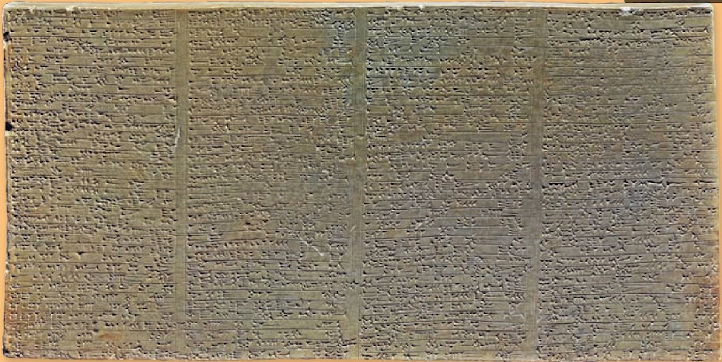
Bloch and Peri 2017, p. 2
This text was defined by Grayson (RIMA 1, p. 231) as the "most detailed Assyrian royal inscription to date," although none of the exemplars listed in his edition could yet offer a complete composite text. In 1989 Manfred Görg published a complete exemplar, which was followed by a few reviews and studies (Schramm 1989–1990, 122–123; Röllig 1994, 144–145; Streck 2007; Wilcke 2010; Bloch, in Bloch and Peri 2017).
A further fragmentray exemplar (19) was published by Frahm in 2009 (KAL 3, p. 23–25, 177, no. 1).
The text celebrates the construction by Tukultī-Niurta of the New Palace at Ashur, with a section dedicated to the narration of military campaigns which curiously appears in a temporal clause within the list of royal epithets, a characteristic that shares with Shalmaneser I text no. 1 [riao/thekingdomofassyria13631115bc/shalmaneseri/texts119/index.html#shalmaneser101].
The first part of name and title section opens the inscription (i 1–36), and it is followed, first by a short summary of his first successful wars (i 37 – ii 13) and then by a long narrative of his three military campaigns (ii 14 – v 17), which ends with a summary of his conquests (V 18–34). After the end of the military narration, it follows the second part of the title section (v 35–37), and, finally, a record of the building enterprise (vi 1–33), and concluding blessings (vi 34 – vii 3) and curses (vii 4 – viii 21).
Access the composite text [http://oracc.museum.upenn.edu/riao/Q005837/] of Tukultī-Ninurta I 01.
Bibliography
Further Bibliography
02
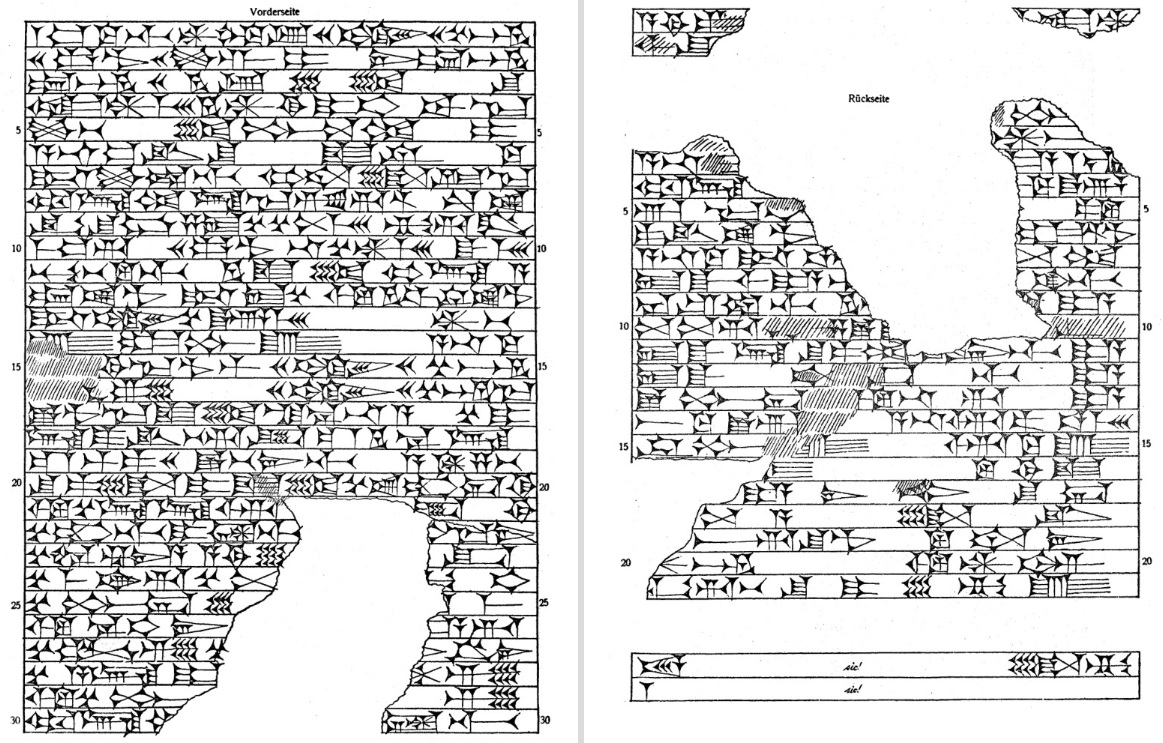
KAH 1, 16
Similar to text no. 1, this inscription from a stone tablet and, possibly two stone fragments records (but the small amount of preserved text is not sufficient to certainly confirm the identification, see RIMA 1, p.239) the construction of the New Palace of Tukultī-Ninurta I at Ashur and the ruler's military conquests.
Access the composite text [http://oracc.museum.upenn.edu/riao/Q005838/] of Tukultī-Ninurta I 02.
Bibliography
03
Another inscription recording the building project of the New Palace of Tukultī-Ninurta at Ashur and his military campaigns is inscribed on a stone pillar (265 cm high and 63 cm wide) that was found in the palace's area. It is possible that a lower part, now missing, was inscribed with the typical concluding formulae, none of which is present in the present monument.
Access the composite text [http://oracc.museum.upenn.edu/riao/Q005839/] of Tukultī-Ninurta I 03.
Bibliography
04
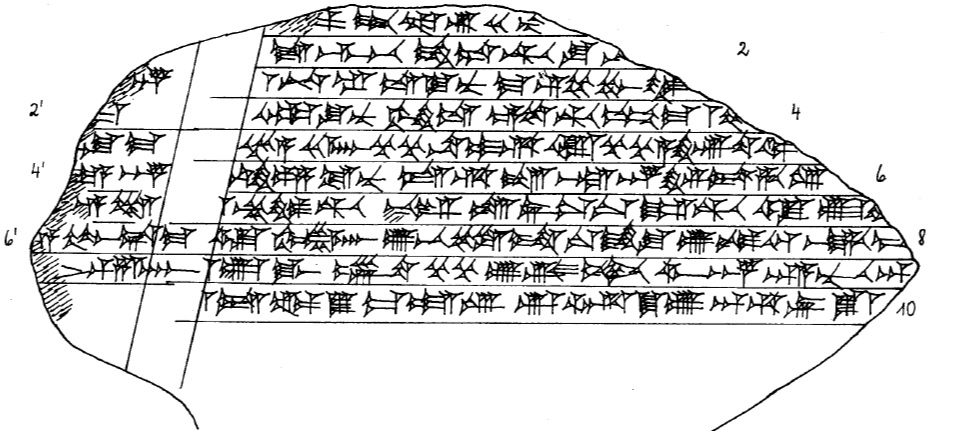
Rost, FuB 22 no. 21
The record of the construction of the New Palace of Tukultī-Ninurta I and his military campaigns is also present on this inscription on a cone fragment from Ashur.
Access the composite text [http://oracc.museum.upenn.edu/riao/Q005840/] of Tukultī-Ninurta I 04.
Bibliography
05
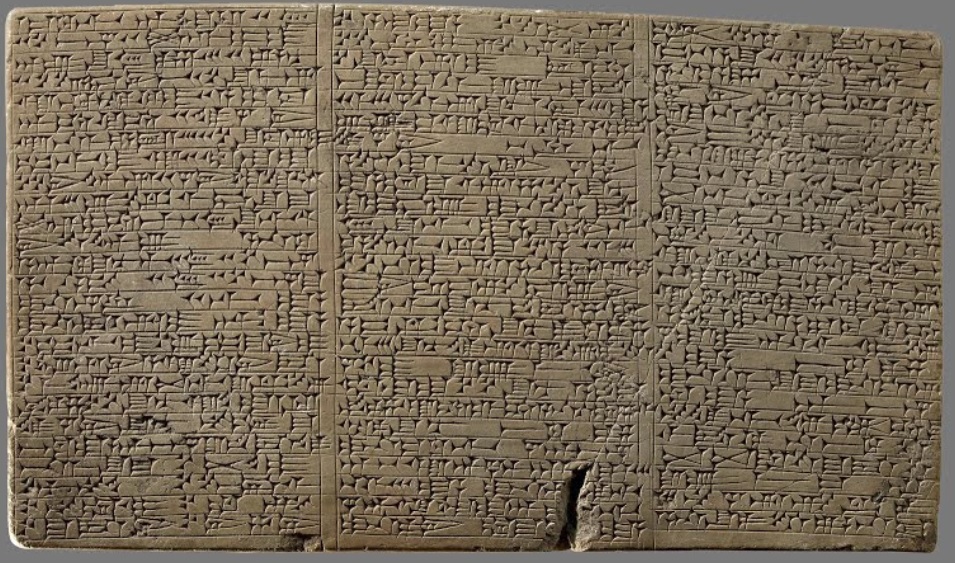
Photo © Vorderasiatisches Museum, Staatliche Museen zu Berlin - Preußischer Kulturbesitz / Olaf M. Teßmer
A stone tablet (56 x 33 cm) was discovered embedded in the brickwork near the front of the Ištar Temple at Ashur. Like texts nos. 1-4, the text records the construction of the New Palace of Tukultī-Ninurta I and his military campaigns. The introduction to this inscription (ll. 1-69) is identical, with minor variants, to text no. 22 (ll. 1-38).
Access the composite text [http://oracc.museum.upenn.edu/riao/Q005841/] of Tukultī-Ninurta I 05.
Bibliography
06
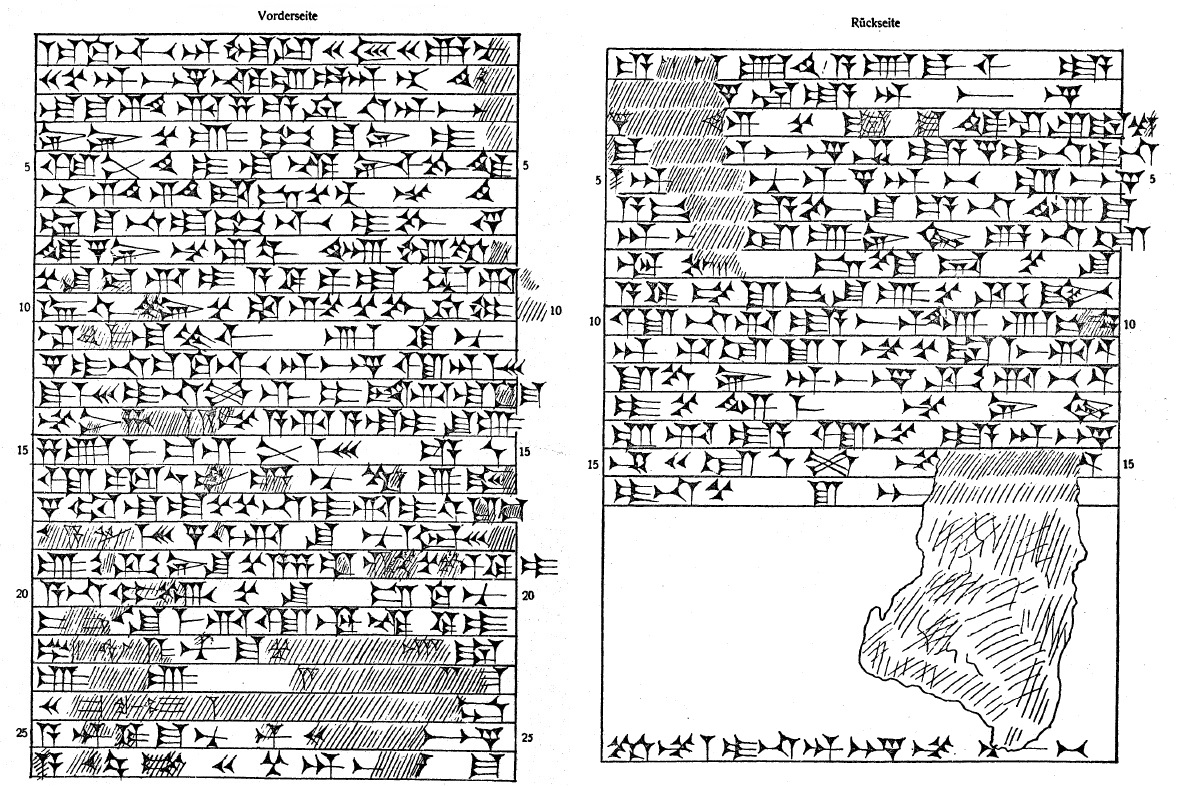
KAH 1, 17.
Yet another record of the conrtuction of the New Palace of Tukultī-Ninurta I with a summary description of his conquests, has been found on three stone tablets (the third exemplar is but a fragment) at Ashur.
Access the composite text [http://oracc.museum.upenn.edu/riao/Q005842/] of Tukultī-Ninurta I 06.
Bibliography
07
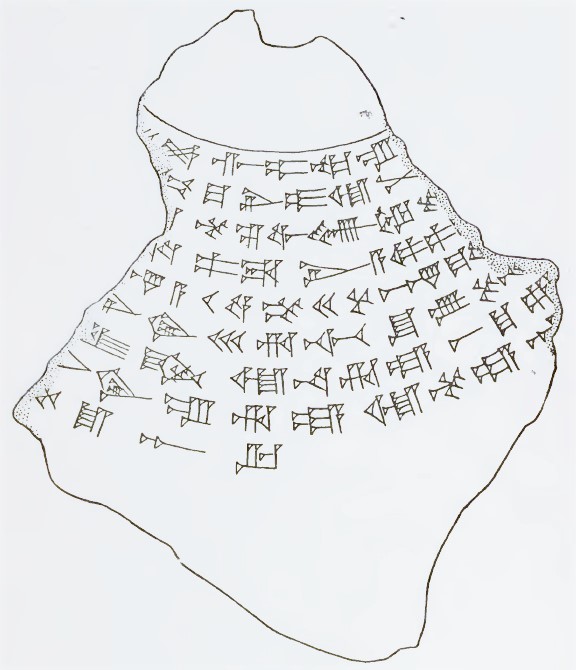
King, Tn. p. 171
Although they have been found at Nineveh, two clay cones bear an inscription, which seems to record the construction of the New Palace of Tukultī-Ninurta I at Ashur; this might suggest either that the two objects were found in a secondary context or that they are among the few artefacts coming from Ashur even if their provenance has been classified as "Kuyunjik."
Access the composite text [http://oracc.museum.upenn.edu/riao/Q005843/] of Tukultī-Ninurta I 07.
Bibliography
08
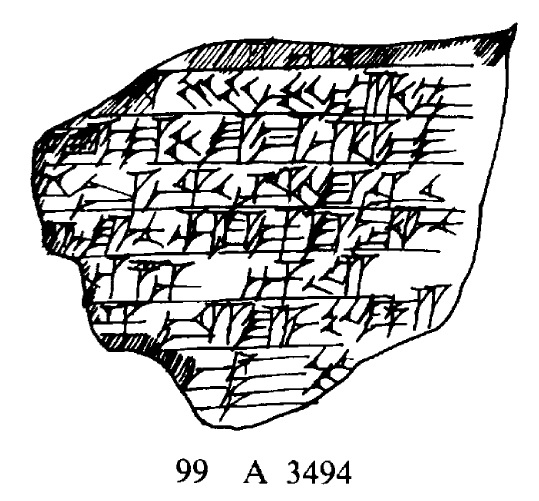
RICCA no. 99
Also this inscription, inscribed on two cone fragments from Ashur, seems to be recording the construction of the New Palace of Tukultī-Ninurta I there.
Access the composite text [http://oracc.museum.upenn.edu/riao/Q005844/] of Tukultī-Ninurta I 08.
Bibliography
09
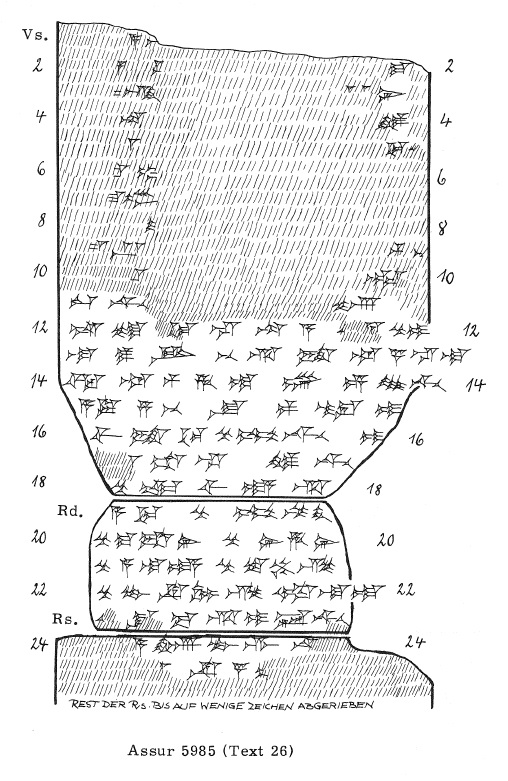
Weidner, Tn. no. 26
A stone fragment found at Ashur, near the east corner of the Anu-Adad temple, is believed to bear an inscription concerning the construction of the New Palace of Tukultī-Ninurta I. The Ass number 5895 has not been located. The Ashur photos 986-988 show instead Ass 8985, but this is possibly a mistake.
Access the composite text [http://oracc.museum.upenn.edu/riao/Q005845/] of Tukultī-Ninurta I 09.
Bibliography
10
Another badly worn stone slab seems to bear an inscription concerning the construction of the New Palace of Tukultī-Ninurta I.
Access the composite text [http://oracc.museum.upenn.edu/riao/Q005846/] of Tukultī-Ninurta I 10.
Bibliography
11
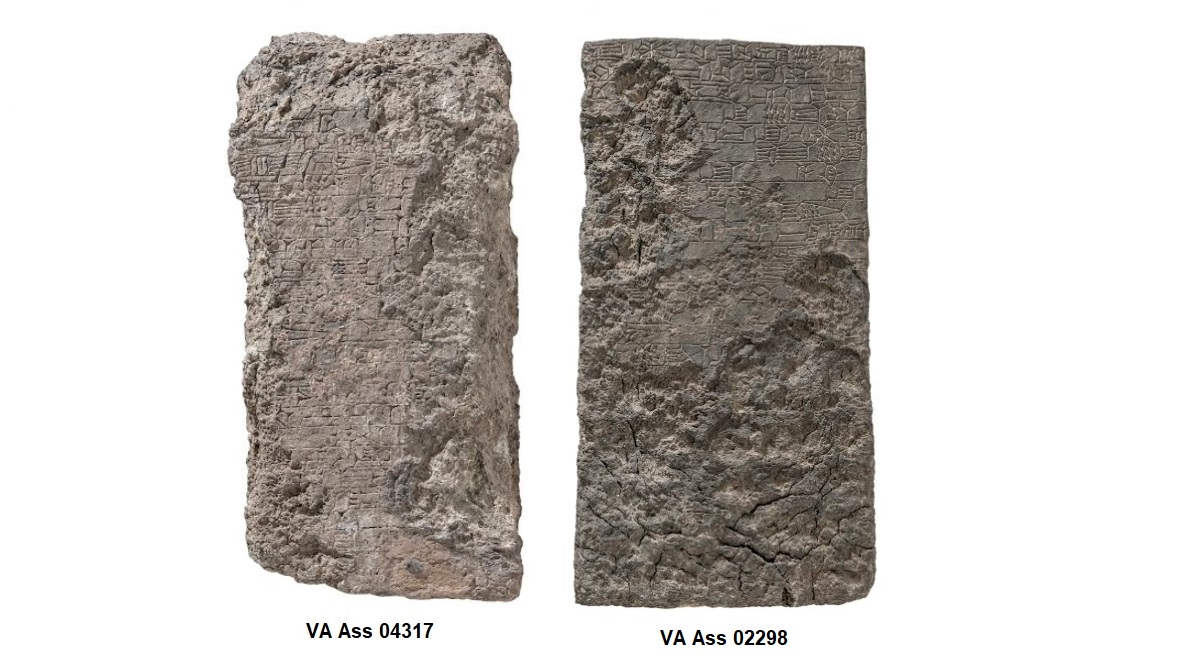
Photo © Vorderasiatisches Museum, Staatliche Museen zu Berlin - Preußischer Kulturbesitz / Olaf M. Teßmer
This inscription recording works on the Ištar Temple at Ashur was found on ten different exemplars, one of them being a huge stone block (ex. 1, 268 x 130 x 40 cm, see photo), while the others are: five large and weighty lead tablets (ca. 74 x 38 cm), four small tablets (ca. 8 x 5 cm) in precious metal, two in silver and two in gold. On exemplar 1 a postscript is added to replace lines 33-34, in which it is recorded that a new temple for the goddess was built by the king south-east of the old one ad that these inscriptions were installed there, although they had already been composed for the old temple.
Size and material of the objects unabled Grayson from collating all parts of the exemplars, see notes in RIMA 1, p. 253.
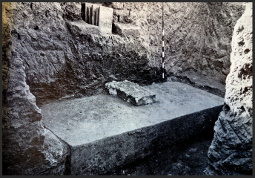
Photo from Walter Andrae's excavations at the Assyrian Ištar temple in Ashur (Andrae 1977, p. 160 Abb. 140). Neatly set in a niche standing upright in the centre of the back wall of the cella of the temple, are visible five Adad-nārāri's stone slabs with the building inscriptions recording the works on the temple. They are ex. 1-5 of text no. 15 [/riao/thekingdomofassyria13631115bc/adadnararii/texts119/index.html#adadnarari115]. Below them the very large stone block inscribed with Tukultī-Ninurta I's text no. 11 [/riao/thekingdomofassyria13631115bc/tukultininurtai/texts119/index.html#tukultininurta111] (ex. 1; 268 x 130 x 40 cm and 350 kg; ex. 9 lead tablet, 75 x 38 cm) lies on the floor. The latter ruler, and Adad-nārāri's grandson, was the one who completed the restoration of the temple and positioned the foundation inscriptions as were then discovered by the German archaeologists.
Access the composite text [http://oracc.museum.upenn.edu/riao/Q005847/] of Tukultī-Ninurta I 11.
Bibliography
12

KAH 2 no. 51
Two small tablets (ex. 1, 5.75 x 2.85 and, ex. 2, 6 x 3 cm), in sliver and gold, bear a shorter version of the inscription no. 11. The location of the tablets is unknown at the moment (see RIMA 1, p. 256).
Access the composite text [http://oracc.museum.upenn.edu/riao/Q005848/] of Tukultī-Ninurta I 12.
Bibliography
13
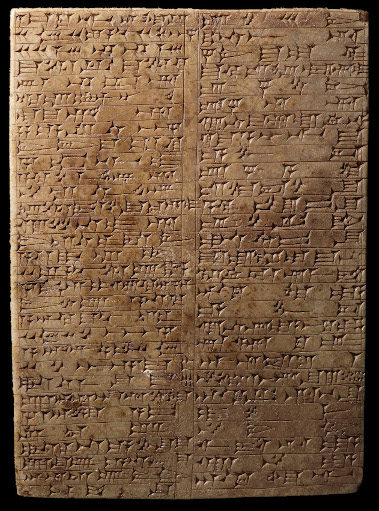
Photo from cdli [https://cdli.ucla.edu/dl/photo/P466427_d.jpg]
A stone tablet (37 x 27 cm) purchased by the German doctor and traveller Eddy Ch. Schacht on the route between Ashur and Hatra in 1917, bears another inscription recording the works on the Ištar temple at Ashur.
The the object, whose location was unknown at the moment of Grayson's edition (RIMA 1, p. 257-258), comes from a private collection: Dorsky, Morris, on loan to J. Pierpont Morgan Library Collection, New York, New York, USA.
Access the composite text [http://oracc.museum.upenn.edu/riao/Q005849/] of Tukultī-Ninurta I 13.
Bibliography
14
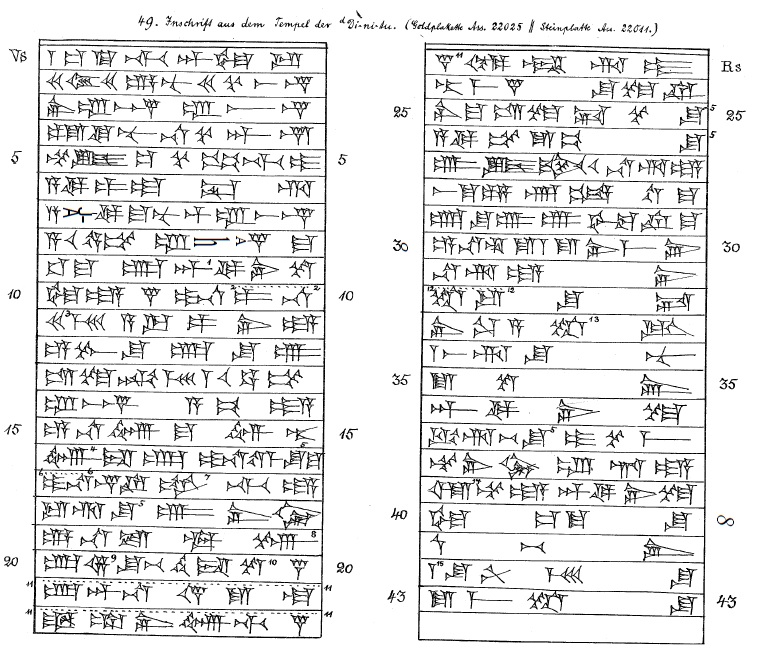
KAH 2 no. 49
This text is inscribed on different objects, two gold tablets, one silver tablet, a stone block, and two lead tablet, all found in a wall behind the dais in the shrine of the goddess Dinitu within the Ištar temple.
Access the composite text [http://oracc.museum.upenn.edu/riao/Q005850/] of Tukultī-Ninurta I 14.
Bibliography
15
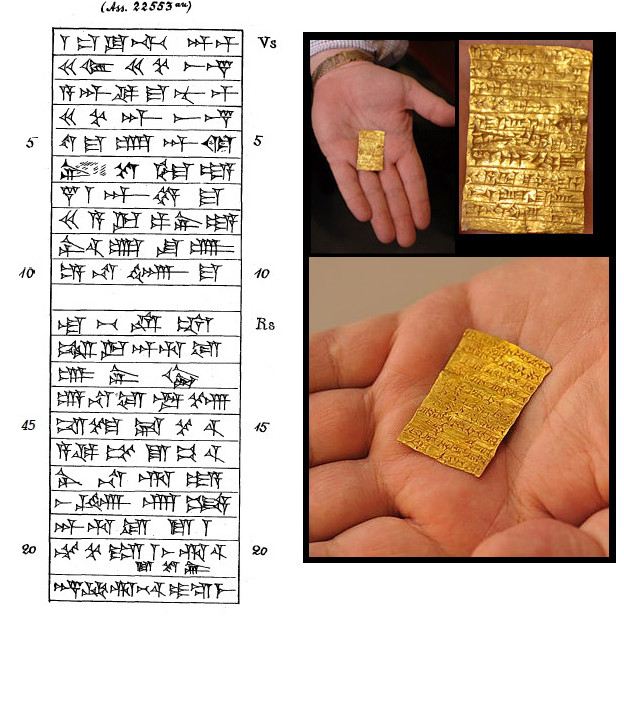
KAH 2 no. 52 and cdli photo
This text, inscribed on a golden (4 x 2.6 cm) and on a silver (5 x 2.7 cm) tablet found at Ashur records the work on the Dinitu shrine of the Ištar temple at Ashur. The text presents some peculiarities: the name "temple of the goddess Dinitu" is incised over the name of another goddess, Bēlit-Akkadî, to whom it was probably previously dedicated; at line seven, the name of the ruler Ilu-šūma has been added in a second time, although no signs of erasure are visible; at line twenty-one, the name of Aššur appears where one would expect that of Dinitu.
The object is today present, with photo, in the cdli [ https://cdli.ucla.edu/dl/photo/P429784_d.jpg]'s database, as located in the Vorderasiatisches Museum, Berlin (Germany) without number, and defined as "unpublished unassigned?"
Access the composite text [http://oracc.museum.upenn.edu/riao/Q005851/] of Tukultī-Ninurta I 15.
Bibliography
16
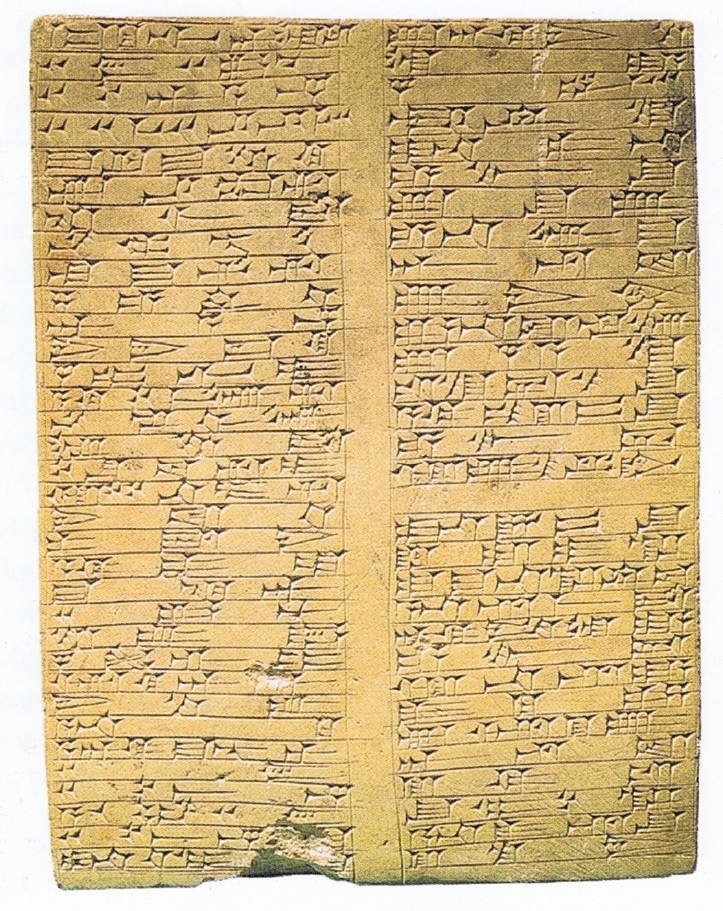
Curtis and Reade, Art and Empire, p. 94 fig. 35
A stone tablet from Ashur (31 x 41 cm) bears an inscription recording the works on the Dinitu shrine in the Ištar temple. A rare curiosity in this inscription is the presence of the name of the scribe (mub-rum A.ZU), on the top edge of the tablet.
Access the composite text [http://oracc.museum.upenn.edu/riao/Q005852/] of Tukultī-Ninurta I 16.
Bibliography
17
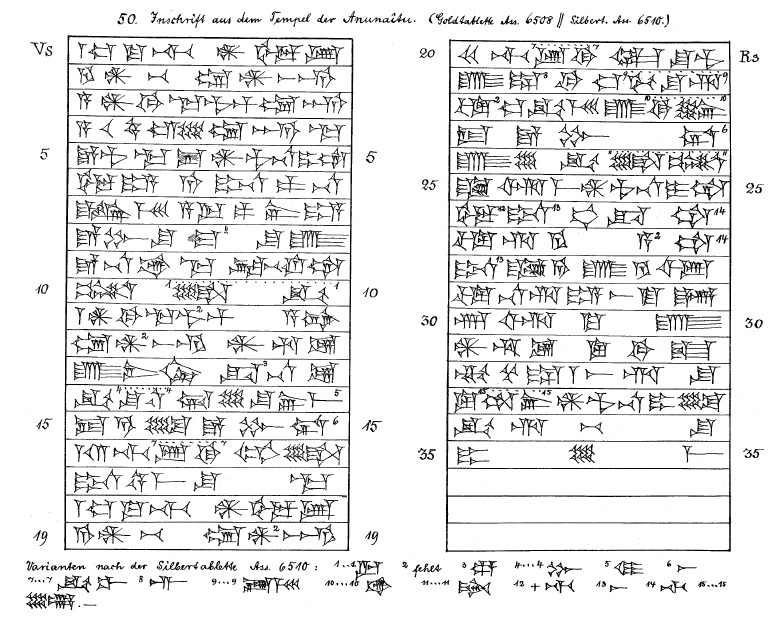
KAH 2, no. 52
Two small tablets, one of gold and the other of silver (both 6.1 x 4.2 cm) have been found together with a similar golden tablet belonging to Shalmaneser I [/riao/thekingdomofassyria13631115bc/shalmaneseri/texts119/index.html#shalmaneser107]. The texts bear inscriptions recording the works on the temple of NInuaittu/Nunaittu ("The Ninevite Goddess"), and Tukultī-Ninurta's describe the completion of the work begun by his father. The tablets were apparently discovered and reburied in the time of Shalmaneser III [/riao/theassyrianempire883745bc/shalmaneseriii/index.html].
Access the composite text [http://oracc.museum.upenn.edu/riao/Q005853/] of Tukultī-Ninurta I 17.
Bibliography
18
A stone tablet from Ashur bears a text describing the works on the temple of Sîn and Šamš, where it was discovered.
Access the composite text [http://oracc.museum.upenn.edu/riao/Q005854/] of Tukultī-Ninurta I 18.
Bibliography
19
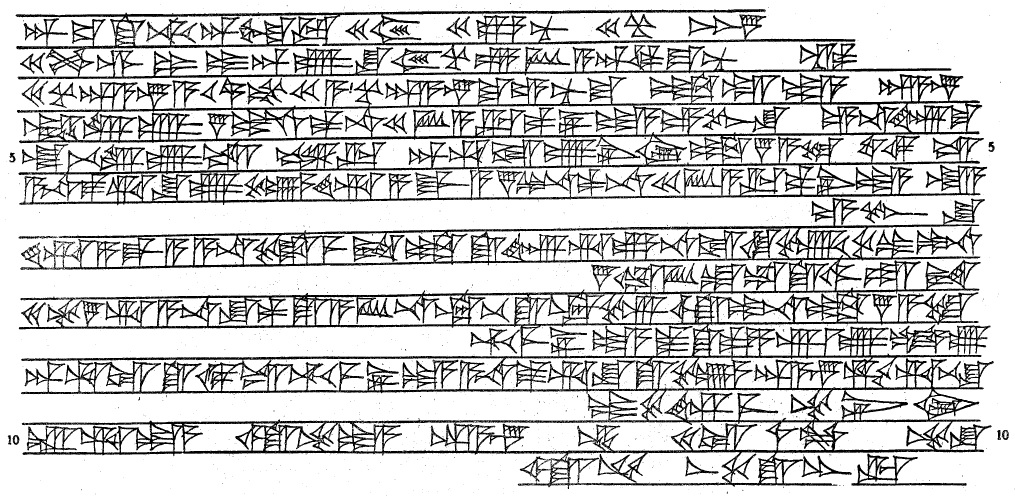
KAH 1, no. 18
Clay cones from Ashur bear an inscription concerning the works on the wall and moat of the city
Access the composite text [http://oracc.museum.upenn.edu/riao/Q005855/] of Tukultī-Ninurta I 19.
Bibliography
Nathan Morello
Nathan Morello, 'Texts nos. 1-19', The Royal Inscriptions of Assyria online (RIAo) Project, The RIAo Project, a sub-project of MOCCI, 2020 [http://oracc.museum.upenn.edu/riao/thekingdomofassyria13631115bc/tukultininurtai/texts119/]